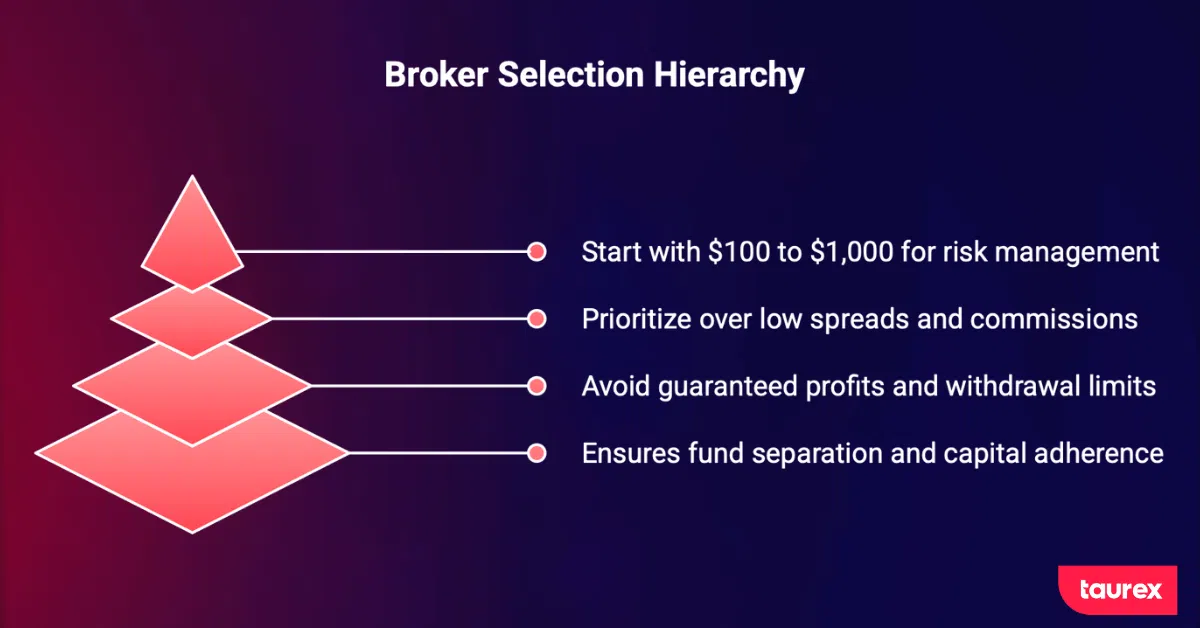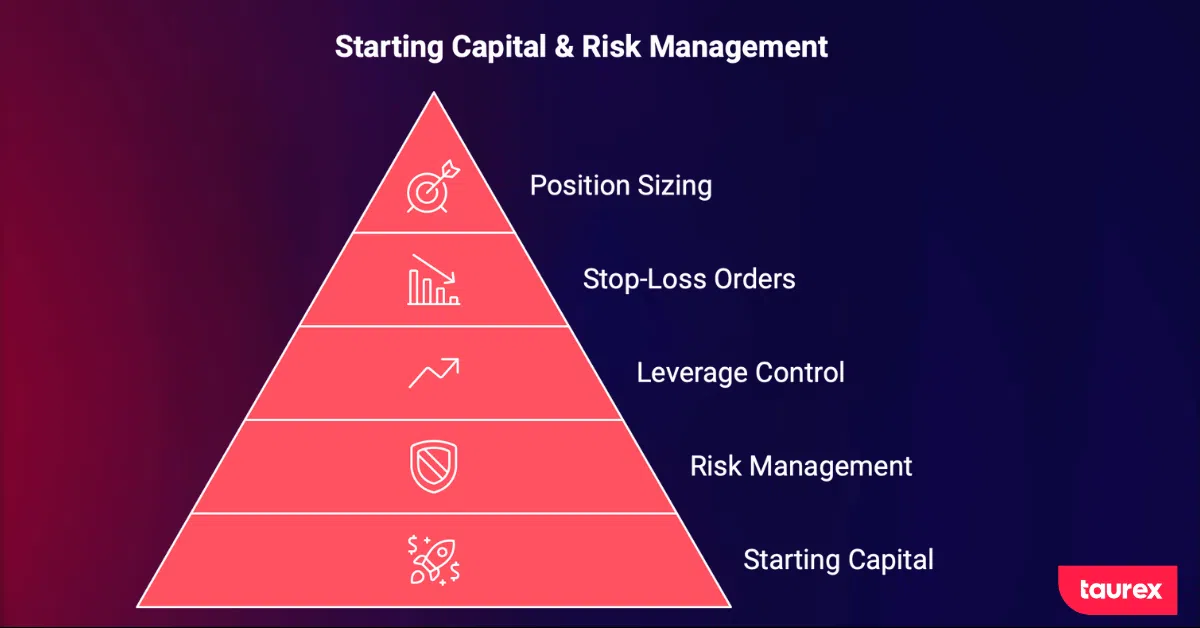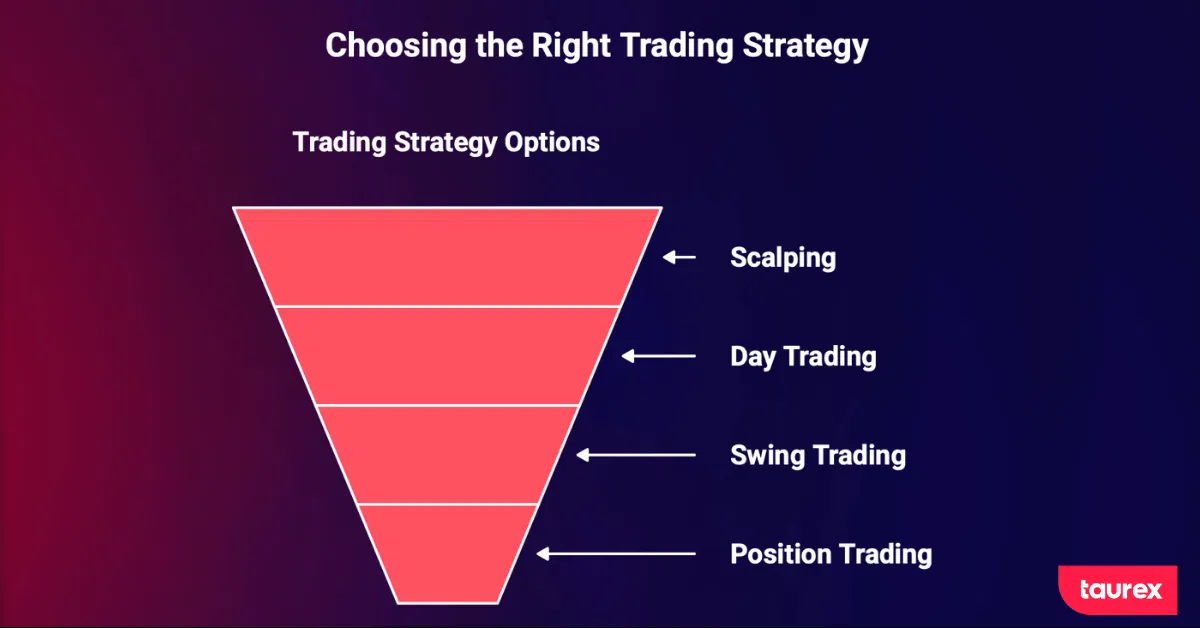How to Become a Forex Trader: A Beginner’s Roadmap
Are you considering becoming a forex trader? The forex market is one of the most exciting and challenging financial markets. With daily trading volumes reaching $9.6 trillion in 2025, it is larger than the combined trading volumes of all other financial markets. However, most people do not realise that 85% to 95% of retail traders lose money.
That should not discourage you. The difference between those who fail and those who succeed usually comes down to preparation, education, and having realistic expectations.
Think of forex trading like learning to fly a plane. You would not get into the cockpit without proper training.
This guide will show you the steps and mindset required to learn how to become a successful forex trader and start trading with confidence.
Understanding the Forex Market
The foreign exchange market is where currencies are traded against each other 24 hours a day, five days a week. Unlike stocks, forex operates through a global network of banks, brokers, and financial institutions. This decentralised structure allows you to trade from anywhere during market hours.
To put this in perspective, that volume would span the distance to the sun and back approximately 3,750 times. Europe accounts for roughly 42% of the global forex market, while North America represents about 26%.
Only about 2.5% of all forex trading comes from retail traders. The rest is dominated by banks, hedge funds, and other financial institutions moving money for various reasons. This is why education is critical for smaller traders.
The seven major currency pairs: EUR/USD, USD/JPY, GBP/USD, USD/CHF, AUD/USD, USD/CAD, and NZD/USD, account for around 66% of all trading volume. EUR/USD alone represents nearly a quarter of all trades. These pairs are the most widely traded, which makes them a good starting point for beginners.
Step 1: Education & Learning Foundation

To learn how to become a forex trader, you must start with a strong educational foundation. You need to understand both technical and fundamental analysis, how leverage works, and why it can quickly wipe out your account.
Research from FXStreet indicates that a lack of education is the primary reason traders fail. Technical analysis is reading price charts, spotting patterns, and using indicators such as moving averages, RSI, and MACD. Fundamental analysis involves tracking economic data releases, central bank decisions, and geopolitical events that affect currencies.
The good news is that there are numerous free resources available to help you get started. Class Central offers over 200 forex courses on platforms like Coursera and Udemy. Additionally, YouTube channels such as The5ers and Rayner Teo provide practical lessons without any sales pressure. It’s a brilliant idea to start with these before spending money on expensive courses or mentorship programs.
For beginners, education is the most important thing. Spend at least three to six months studying before investing actual money. Read books, watch educational content, participate in forums, and acquire as much knowledge as possible. The market will still be there when you’re ready to trade.
Step 2: Setting Up Your Trading Infrastructure

Once you understand the basics, it’s time to set up your trading environment. Start by picking a platform. MetaTrader 4 (MT4) has been popular for years, but MetaTrader 5 (MT5) now accounts for over half of the combined trading volume as of 2025. MT5 comes with 44 technical indicators, compared to MT4’s 24, as well as better backtesting tools and more timeframes.
Don’t overcomplicate the decision between platforms. Both are suitable for beginners. The priority is to become proficient with one platform and master its features. Most brokers allow you to switch platforms later if needed.
Begin with a demo account. Practicing on virtual funds is crucial. Treat your demo money as if it were real. If you struggle to apply your trading strategy effectively in a demo account, it’s worth taking more time to practise before using real funds. Emotions play a much bigger role when actual funds are at stake.
Your trading setup does not need to be elaborate. A decent computer or laptop, a stable internet connection, and, perhaps, a second monitor for charts are enough. Some traders use six-screen setups, but that does not make you more profitable.
Step 3: Choosing a Regulated Broker

Choosing the wrong broker can make trading much harder for you. The first thing you must pay attention to is the regulation. Look for brokers that are supervised by central regulatory authorities, such as the FCA (UK), ASIC (Australia), or CFTC/NFA (US). These regulators ensure that brokers keep client funds separate and adhere to strict capital requirements.
Be aware of warning signs. Avoid brokers that promise guaranteed profits, operate offshore without oversight, or limit withdrawals. If accessing your funds is difficult, look elsewhere. Online reviews can be helpful, but remember that unhappy customers often post more frequently than satisfied ones.
While spreads and commissions are important considerations, platform reliability should take priority over finding the lowest rates. Brokers advertising zero spreads often compensate for this with slow execution or frequent requotes. Beginners can start with deposits from $100 to $1,000, but $1,000 is a safer amount to practise proper risk management.
Step 4: Starting Capital & Risk Management

Now, let’s discuss capital requirements. Technically, you can start trading with as little as $10, but we recommend starting with a minimum of $1,000 for meaningful trading with proper risk management. With smaller capital, you may be tempted to use excessive leverage to chase profits, which usually leads to blown accounts.
Traders often consider managing the amount of capital at risk on a single trade. The specific percentage varies depending on individual risk tolerance and trading style. LiteFinance analysis shows that limiting risk to 2% per trade greatly reduces the likelihood of depleting your account. On a $1,000 account, this means risking a maximum of $20 per trade. This may seem modest, but that’s intentional. Successful trading requires capital preservation until you achieve consistent profitability.
Leverage can be both your best friend and worst enemy. US brokers offer up to 1:50 leverage, EU brokers cap it at 1:30, and offshore brokers might offer 1:500 or more. Higher leverage increases potential profits but also speeds up losses. Start with lower leverage and increase it only after proving consistent success.
Stop-loss orders are essential. PAXFOREX research shows that not using stop-losses is a primary reason traders fail. Always set your stop-loss before entering a trade and stick to it. The market isn’t influenced by your confidence or emotions.
Position sizing is another critical skill. Use a position size calculator to determine the correct lot size based on your account balance, risk percentage, and stop-loss distance. This ensures you risk the same percentage on every trade, regardless of the setup.
Step 5: Developing Trading Strategies

There is no one-size-fits-all trading strategy. What works for a scalper may not work for a swing trader. Here’s a breakdown of the main approaches, so you can choose one that best suits you.
Scalping involves taking dozens of trades each day, holding positions for seconds to minutes at a time. It requires continuous screen time and swift decision-making. If you have a day job, scalping may not be a good fit. The stress and time commitment can quickly lead to burnout.
Day trading means you open and close positions within the same day, and never hold overnight. It requires a few hours daily to analyse markets and manage trades. This approach works well if you can dedicate specific hours, such as during the London-New York overlap when volatility is highest.
Swing trading involves holding positions for several days or weeks to capitalise on larger price movements. This is a good choice for beginners because it does not require constant monitoring, allowing time for considered decisions. You can analyse charts in the evening and set trades with proper stop-losses and take-profits.
Position trading is the long-term approach that holds trades for weeks or months based on fundamental analysis and long-term trends. It requires a deep understanding of economic cycles and patience, which many retail traders find challenging.
Whichever strategy you choose, backtest it thoroughly before trading with real money. Most platforms have strategy testers that show how your approach would have performed historically. Past performance does not guarantee future results, but it provides a useful baseline for expectations.
Step 6: Emotional & Psychological Preparation

The hardest part of trading is not learning strategies or reading charts; it’s actually managing emotions. Research from T4Trade identifies fear, greed, and impatience as the primary emotional challenges that cause traders to fail.
Fear can make you exit winning trades too early or avoid valid setups. Greed may lead you to hold losing trades too long or risk too much chasing big wins. Overconfidence following a winning streak is also dangerous, as traders often increase their position sizes and disregard risk management rules.
Maintaining a trading journal is essential. Document every trade: your entry rationale, emotional state, and the outcome analysis. After a month, behavioral patterns will become apparent. You may consistently lose money on Fridays, or trade worse after certain news events. These insights are invaluable for improvement.
Set realistic goals. Some experienced traders target regular returns, though this involves significant risk and varies by market conditions. No return is ever guaranteed. As a beginner, focus on not losing money first. Breaking even in your first year is a real achievement.
Develop a routine that separates your trading from the rest of your life. Have specific trading hours, a dedicated workspace, and rules about when to walk away. The market operates 24/5, but that doesn’t mean you should be glued to charts all day.
Step 7: Continuous Learning & Community Engagement

Continuous learning, mentorship, and deliberate practice differentiate successful forex traders from those who fail. Markets evolve, new strategies emerge, and economic conditions shift. Professional traders invest years developing their expertise.
Join trading communities, but choose carefully. Reddit’s r/Forex offers helpful discussions mixed with noise. Telegram and Discord groups offer real-time market updates, but be cautious of signal sellers and get-rich-quick schemes. Focus on a few trusted sources rather than jumping between multiple “gurus.”
Stay informed about global economics. Follow economic calendars, central bank announcements, and learn how different data releases affect currencies. Events like Non-Farm Payroll Fridays, interest rate decisions, and inflation reports can significantly move markets.
Consider finding a mentor, but be careful. The forex education space is filled with individuals selling dreams. Look for mentors with verified track records, realistic claims, and teaching styles that resonate with you.
Career Paths & Income Potential
The average forex trader salary in the US ranges from $101,533 to $127,522 according to 2025 data. These figures mainly apply to institutional traders working for banks or hedge funds, rather than independent retail traders, whose income depends entirely on individual performance.
For those exploring professional trading, some consider opportunities with prop trading firms. These companies provide capital for trading, usually taking a percentage of profits while covering losses.
Institutional roles, such as currency researchers, forex account managers, and FX strategists, offer more stable income. These positions typically require formal education in finance or economics along with several years of experience.
The focus for beginners is generally on developing skills, understanding the markets, and building trading discipline rather than expecting specific income levels.
Common Challenges & Success Tips
Only about 3% of traders survive beyond five years. Those aren’t great odds, but if you understand why traders fail, you will be able to avoid the same mistakes.
Poor risk management kills more trading accounts than a bad strategy. Overleveraging, not using stop-losses, and risking too much per trade is the recipe for disaster.
Unrealistic expectations are another killer. You won’t turn $1,000 into $100,000 in a month. Anyone promising such returns is selling you a fantasy. Sustainable trading means consistent small gains, not home-run trades.
The path to success requires patience that most people don’t have. Are you willing to invest that much time and potentially lose money for years before seeing returns?
Your Next Steps
If you’ve made it this far, you are serious about forex trading. This roadmap is your guide on how to become a forex trader, step by step:
1. Start Your Education Today
Open a demo account with a regulated forex broker, such as Taurex, which offers both MT4 and MT5 platforms. Practise for at least three months before considering live trading. Track every trade in a journal and analyse what works and what doesn’t.
2. Begin Live Trading Small
When you are ready, start with capital you can afford to lose. Consider any losses as tuition for the most expensive university you will ever attend: the market.
3. Build Your Strategy Carefully
Test your strategy thoroughly and manage risk consistently. Accept that losses are part of the process. Commit to the long game.
Remember, forex trading is not a scheme to get rich quickly. It is a professional skill that requires dedication, similar to becoming a doctor or engineer. The market will test your discipline, patience, emotional control, and commitment to continuous learning.
For those who persist and treat trading as a profession rather than a form of gambling, the forex market presents genuine opportunities. The question is not whether you can become a forex trader. It is whether you are willing to do what the 95% who fail will not: put in the work, accept losses, learn from mistakes, and keep showing up day after day until you succeed.
Take charge of your trading journey. The market is waiting, and it does not care whether you are ready or not.
Risk Disclosure: Trading foreign exchange (forex) involves significant risk of loss and is not suitable for all investors. Past performance does not guarantee future results. Investment values may fluctuate, and you could lose more than your initial investment. Only trade with capital you can afford to lose.
FAQ
1. How to become a successful forex trader?
Becoming successful requires preparation, discipline, and persistence. Focus on risk management, backtest strategies, control your emotions, and commit to continuous learning. Consistency and patience are key.
2. How much money do I need to start trading forex?
While you can start with as little as $10, a minimum of $1,000 is recommended to trade meaningfully with proper risk management. Starting with sufficient capital helps you avoid overleveraging and reduces emotional pressure.
3. Which trading platform should I use?
MetaTrader 4 (MT4) and MetaTrader 5 (MT5) are popular choices. MT5 offers a wider range of indicators, backtesting tools, and timeframes. The key is to master one platform and understand all its features.
4. What is leverage, and how should I use it?
Leverage allows you to control larger positions with smaller capital. While it can boost profits, it also magnifies losses. Beginners should start with low leverage and increase it only after demonstrating consistent profitability.
5. How important is risk management in trading?
Risk management is essential for becoming a successful forex trader. Risk management is a key aspect of trading. Traders focus on strategies to control potential losses, including monitoring position sizes, setting limits, and using tools such as stop-loss orders. Approaches vary depending on individual risk tolerance and trading style.
6. Which trading style should I choose?
Choose a style that fits your personality and schedule. Scalping is a fast-paced strategy, while day trading involves holding trades for hours, swing trading for days or weeks, and position trading for the long term. Beginners often prefer swing trading.
7. How do I handle emotions while trading?
Fear, greed, and overconfidence are major pitfalls. Maintain a trading journal, set realistic goals, and establish a routine to keep trading separate from your daily life. Emotional control is vital for learning how to become a professional forex trader.
8. How long does it take to become consistently profitable?
Becoming a successful forex trader usually takes years of practice. Most traders who stick with it for four or more years develop the skills, strategies, and discipline needed to achieve consistent results.








